|
Displaying items by tag: Acquisitions
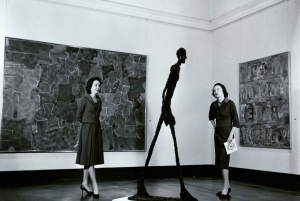
The Carnegie Museum of Art in Pittsburgh, PA has reopened its modern and contemporary art galleries following a major reinstallation. The updated galleries will be part of the Carnegie International, which is slated to open October 5, 2013. This year’s International will bring together 35 artists from 19 countries and will include a major exhibition of international art, the presentation of the museum’s collection, and a series of events organized in cooperation with the city of Pittsburgh.
Curators Dan Byers and Tina Kukielski helmed the reinstallation of the Scaife Galleries, which hold the Carnegie’s modern and contemporary art collections. Together they selected over 200 objects, many of which had been acquired through past Internationals, and redistributed them throughout 8 galleries.
Industrialist Andrew Carnegie founded the Carnegie Museum in 1895. Determined to build a bold collection of modern art, Carnegie organized annual contemporary exhibitions and sought to educate visitors, promote international understanding of art, and attract the world to Pittsburgh. Through acquisitions made from these yearly exhibitions, Carnegie built the museum’s impressive collection. The Carnegie International became an annual occurrence in 1896 and is the oldest exhibition of international contemporary art in North America and the second oldest in the world.
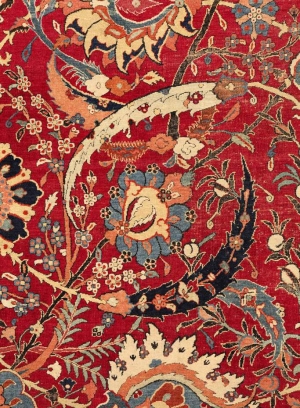
On June 5, 2013 at Sotheby’s New York the Corcoran Gallery of Art auctioned 25 rugs from its William A. Clark Collection. The rugs, which are from the 16th and 17th centuries, brought in $43.7 million, over four times the pre-sale high estimate of $9.6 million, making it the most successful carpet auction ever held. 100% of the lots sold and the auction achieved “White Glove” status, meaning every lot in the sale garnered more than it’s pre-sale high estimate.
The highlight of the auction was the Clark Sickle-Leaf Carpet. An important and iconic rug created by an unknown Persian artist during the first half of the 17th century, the rarely exhibited piece was expected to garner between $5 million and $7 million. The carpet ended up selling for $33.7 million, the highest price paid for any carpet at auction. Mary Jo Otsea, the senior consultant for rugs and carpets at Sotheby’s said, “Selling the Clark Sickle-Leaf Carpet for a record-breaking price of more than three times the previous auction record for a carpet has unquestionably been the highlight of my 30 year career. It is gratifying to see the strength of the market for carpets of this quality and rarity.”
The rugs were part of a bequest from William Clark (1839-1925), a Montana-based entrepreneur-turned-senator, to the Corcoran in 1925. The gift was comprised of 200 paintings and drawings and a number of other works, including the rugs. The Corcoran will use the proceeds from the sale to support future acquisitions that will better fit the institution’s focus on American and contemporary art. While the Corcoran has endured recent financial troubles, the money will not be used for operating expenses in keeping with its deaccession policy.
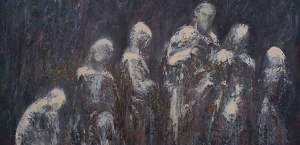
The Georgia Museum of Art at the University of Georgia is hosting the show Deaccessioning Bernard Smol (1897-1969), which is putting a unique spin on the standard museum exhibition. Due to limited storage space and an evolving collection, the museum has decided to deaccession all but one of Smol’s works. Visitors to the exhibition will vote for the piece that they would like to remain in the museum’s collection and curatorial staff will work this feedback into their final decision.
The process of deaccessioning artworks is lengthy and closely regulated. A museum must make the public aware of its intent and the museum’s collections committee and Board of Advisors must approve that intent. Only when all parties are on board is a work able to be removed from a collection. Oftentimes, the artwork heads to auction and the proceeds from the sale are used for future acquisitions that will bolster the museum’s collection.
Deaccessioning Bernard Smol presents five oil paintings by the French artist, which have not been shown at the Georgia Museum since their initial exhibition in 1959. The Georgia Museum was inspired by DePaul University’s exhibition, The Good the Bad, and the Ugly, which helped them decide what works to deaccession from their own collection in 2010.

Thomas M. Messer, the longtime director of the Solomon R. Guggenheim Museum in New York, passed away on Wednesday, May 15, 2013 at his home in Manhattan. Messer served as the institution’s director from 1961 to 1988 when he retired. Messer also served as the director of the Guggenheim Foundation, which is dedicated to promoting the understanding and appreciation of art, from 1980 to 1988.
During his time at the Guggenheim, Messer helped to establish the museum as of one of the finest art institutions in the world. In doing so, he grew its collection, increased its exhibitions program, improved its publications, and helped it to become a global entity.
Messer vastly expanded the Guggenheim’s holdings by acquiring two major private collections. In 1963, Justin K. Thanhauser, the son of a German art dealer, gave the museum a trove of Impressionist, Post-Impressionist, and early modern works including over 30 Picassos. The second bequest came from Peggy Guggenheim who left her entire collection including an array of Cubist, Surrealist, and Abstract Expressionist works to the Guggenheim Foundation. The collection operates as a museum known as the Peggy Guggenheim Collection.
Born in Eastern Europe in 1920, Messer arrived in the United States in 1939. He graduated from Boston University in 1942, joined the army, and served as an interrogator for military intelligence in Europe. After the war, he stayed in Europe and studied art at the Sorbonne. Upon his return back to the United States, Messer was named director of a small museum in New Mexico. He eventually earned a master’s degree in art history from Harvard and was soon appointed director of the Institute of Contemporary Art in Boston.
While he has no surviving family, Messer leaves behind a legacy of diplomatic leadership as well as one of the finest art institutions in the world.
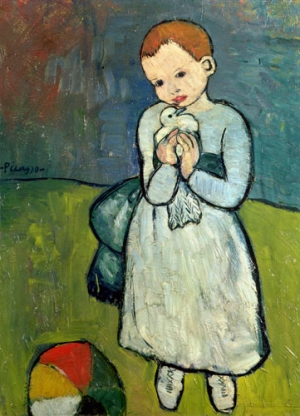
After 89 years in British collections, Pablo Picasso’s (1881-1973) Child with a Dove will leave the UK. The painting, which marks Picasso’s transition from a predominantly Impressionist style to his somber blue period, was sold last year to a collector in Qatar for nearly $77 million. The UK’s government quickly placed an export ban on the work in hopes that a British buyer would step up and claim the painting. The ban expired in December and no British collector or institution was able to raise the funds necessary to keep Child with a Dove in the country.
Qatar has emerged as a major force in the modern and contemporary art markets in recent years. In 2011, the emirate purchased one of Paul Cézanne’s (1839-1906) versions of The Card Players for $250 million. Other major acquisitions by the country include Mark Rothko’s (1903-1970) White Center (Yellow, Pink and Lavender on Rose) for $72 million as well as works by Andy Warhol (1928-1987) and Richard Serra (b. 1939).
Child with a Dove first came to the UK in 1924 after being purchased by a British collector, Mrs. R.A. Workman. The painting eventually made its way to the art collector Samuel Courtauld and following his death in 1947 was bequeathed to the Welsh Aberconway family. Christie’s sold the painting in 1947 on behalf of the Aberconways. Just last year the painting went on display at the Courtauld Gallery, which Samuel Courtauld founded, as part of the exhibition Becoming Picasso: Paris 1901. The exhibition ends on May 27, 2013 at which point the painting will be returned to Christie’s and then shipped out of the UK.

Marguerite Steed Hoffman, a current trustee and former chairman of the Dallas Museum of Art, has donated $17 million to the institution to create the Marguerite and Robert Hoffman Fund for European Art Before 1700. Hoffman specified that $13.6 million is to be used for acquisitions and the remaining $3.4 million is allotted for exhibitions and planning. Hoffman’s generous gift is one of the country’s largest geared towards the purchase and care of Old Master works.
While the Dallas Museum of Art has a substantial collection of late 19th and early 20th century works, its Old Master holdings are lacking. Hoffman’s donation will help expand its European Renaissance and Baroque collections; her gift also more than doubles the museum’s acquisition endowment.
Hoffman created the fund in honor of her late husband, Robert, who died in 2006. The two were important benefactors of the museum for years and participated in an important gift of modern and contemporary art that took place in 2005. The gift was part of a campaign that helped raise over $185 million for the museum.

After receiving some criticism for its meager collection of 20th century art, the Crystal Bridges Museum of American Art in Bentonville, Arkansas made a number of major acquisitions. The works will debut at the museum later this month as part of the 20th Century Art Gallery’s rotating exhibition schedule. Along with the newly acquired works, Mark Rothko’s (1903-1970) No. 210/No. 211 (Orange), which was purchased by Crystal Bridges in 2012, will be reinstalled.
Highlights from the museum’s recent purchases include Andy Warhol’s (1928-1987) Hammer and Sickle (1977). The 6 x 7 foot acrylic and silkscreen ink on canvas work is a part of Warhol’s Hammer and Sickle series. Crystal Bridges also acquired a major copper and Plexiglas sculptural work by the minimalist artist Donald Judd (1928-1994). Untitled 1989 (Bernstein 89-24) (1989) stands nearly 19 feet tall and is comprised of ten box-like elements made of copper and red Plexiglas. The sculpture is a prime example of Judd’s pioneering work.
In addition to the works by Warhol and Judd, Crystal Bridges acquired Max Weber’s (1864-1920) early modernist painting, Burlesque #1 (1909); Agnes Pelton’s (1881-1961) desert inspired oil on canvas work, Sand Storm (1932); and Marvin Dorwart Cone’s (1891-1965) Stone City Landscape (1936), which is executed in the Regionalist tradition.
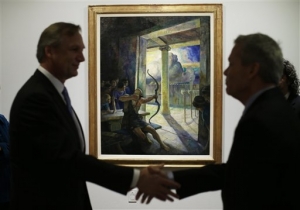
On March 4, 2013 the Philadelphia Museum of Art announced a number of important acquisitions that will enhance the institution’s European, Latin, and American art collections. The gifts came from various donors including collectors Roberta and Richard Huber, global healthcare company GlaxoSmithKline, and several Museum Trustees.
Among the recent acquisitions is Amaryllis Josephine, a double-page watercolor on vellum by Belgian painter and botanist Pierre Joseph Redouté (1759-1840). A pencil drawing of the flower’s bulb accompanies the watercolor. Both of the works were created as part of a series of engravings made under the patronage of the empress Joséphine, Napoleon Bonaparte’s first wife.
The museum also received four 18th century paintings that are currently on view as part of the exhibition Journeys to New Worlds: Spanish and Portuguese Colonial Art from the Roberta and Richard Huber Collection (on view through May 19, 2013). The works include King Luis I of Spain on Horseback (unknown artist, Peru); Saint Anthony of Padua Preaching Before Pope Gregory IX (unknown artist Peru); The House at Nazareth (unknown artist, Bolivia); and Our Lady of the Reedbed or Irún with Donor, Captain Joaquín Elorrieta by Ecuadorian artist José Cortés de Alcocer.
Other acquisitions include 236 photographs by pioneering modern photographer Paul Strand (1890-1976); N.C. Wyeth’s (1890-1976) Trial of the Bow, the first painting to enter the museum’s collection by the artist; and an early 20th century stained glass and bronze chandelier by Tiffany Studios under the artistic direction of Louis Comfort Tiffany (1848-1933).
The Philadelphia Museum of Art will hold an exhibition of its recent acquisitions this summer.
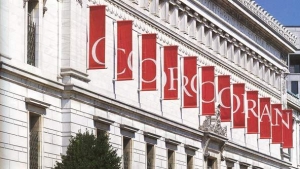
On June 5, 2013 the Corcoran Gallery of Art in Washington, D.C. will auction 25 rugs from its William A. Clark Collection at Sotheby’s New York. The rugs, which are from the 16th and 17th centuries, are estimated to bring as much as $9.6 million.
The rugs were part of a bequest from William Clark (1839-1925), a Montana-based billionaire entrepreneur-turned-senator, to the Corcoran in 1925. The gift was comprised of 200 paintings and drawings and a number of other works, including the rugs.
The Corcoran will use the proceeds from the sale to support future acquisitions that will better fit the institution’s focus on American and contemporary art. While the Corcoran has endured recent financial troubles, the money will not be used for operating expenses in keeping with its deaccession policy.
Highlights from the Corcoran sale include the Clark Sickle-Leaf Carpet, which is expected to garner between $5 million and $7 million. An unknown Persian artist created the rug during the first half of the 17th century possibly for the shah. The rarely exhibited Sickle-Leaf is one of the most iconic and important carpets to appear at auction. Another rug known as the Lafoes Carpet, which measures 44 feet long, is expected to bring between $800,000 and $1.2 million.
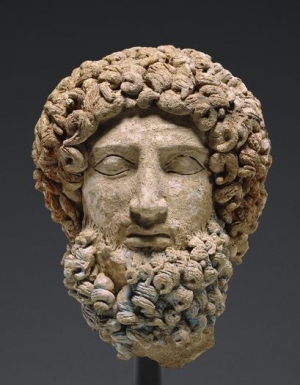
For years, Italy, Greece, and other ancient lands have accused American museums of ignoring evidence that antiquities in their collections were looted from archaeological sites. Five years ago, the Association of Art Museum Directors (AAMD) responded by making the requirements for acquiring ancient works much more stringent. The revised guidelines advised American museums against acquiring works unless solid proof existed that the artifact, prior to 1970, was outside the country where it was discovered in modern times, or was legally exported from that country after 1970.
1970 remains an important date, as it marks the year UNESCO put a stop to the illicit trafficking of antiquities. The year is now regarded as the standard cutoff for collecting. Works that appear on the market without documentation dating back that far are much more likely to have been stolen, looted, or smuggled out of their countries.
On Wednesday, January 30, 2013 the AAMD announced a few additional restrictions for American museums. The AAMD, which has 217 member museums in North America, now requires institutions to post a public explanation on the AAMD’s website if they acquire any ancient works with spotty ownership records. In addition, the museum much provide an image of the object, any known provenance information, and an explanation as to why they decided to acquire the work. If an institution fails to comply, they will be subject to ethical scrutiny and possible expulsion from the AAMD.
Officials hope that the tighter acquisition regulations will discourage American museums from obtaining questionable artifacts while supporting transparency between the United States and nations of origin who may lay claim to the antiquities.
|
|
|
|
|